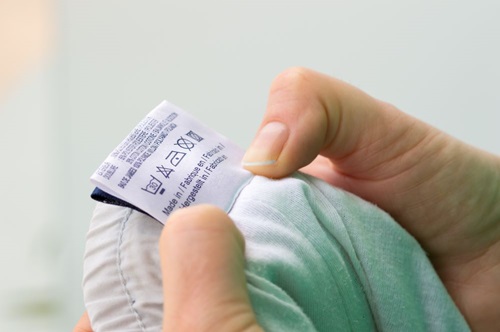Bitte wählen Sie Ihren Standort und Ihre Sprache aus

Navigating the different textile labeling regulations by country can feel like untangling a spool of thread. With each region imposing its own set of standards and requirements, the task of ensuring compliance can seem overwhelming. However, armed with the right textile labeling software, you can streamline this process and confidently navigate textile labeling and regulations.
This blog post will equip you with the knowledge you need to ensure your textile labels are compliant wherever your products are sold and tell you what to look for to find the best textile labeling software.
Download a free trial of textile labeling software
Selling textiles across borders requires keeping up with the regulations of each market. Here's a quick reference guide for the textile labeling requirements in the United States (US), Canada, Mexico, and the European Union (EU) along with the primary agencies responsible for enforcing these requirements.
Regulations and requirements vary depending on the type of textile being labeled (e.g. clothing garment, curtains, socks, carpet, etc.). Verify what specific requirements are needed for your textiles on the governing agency's website for the US, Canada, Mexico, and EU.
The Federal Trade Commission (FTC) enforces the Textile Labeling Act, which governs the labeling of textile products sold in the US. This includes requirements for fiber content disclosure and country of origin:
The Competition Bureau is responsible for enforcing the Textile Labeling and Advertising Regulations, which are similar to the US regulations. They oversee fiber content disclosure, specific labeling for wool and fur, and country of origin information:

Textile labeling in Mexico is dictated by the Official Mexican Standard (NOM, Norma Oficial Mexicana) NOM-004-SE-2021. This standard applies to all textile products, clothing, accessories, and household linens sold in Mexico, regardless of the origin, if the textile content is at least 50% of the total weight. Here's a breakdown of what information must be included on the label:
The European Commission (EC) establishes harmonized regulations for product labeling across the EU member states. While specific enforcement falls on individual member states, the EC sets the guidelines for textile labeling, including fiber content disclosure, care instructions, and considerations for multilingual information:
One of the best ways to stay compliant when it comes to the varying textile labeling requirements is to invest in reliable labeling software. Here are some factors to keep in mind when choosing the best labeling software for textiles:
TEKLYNX has the best barcode labeling software for staying compliant with your textile labeling. Our suite of products includes various label designers and enterprise solutions to fit the needs of your labeling environment.
Below are some specific features in our software to help you streamline your labeling process and stay compliant:
Integrations with business systems: CODESOFT integrates with any database or business system to pull real-time data onto your labels, reducing manual data entry.
Variable images: CODESOFT supports the use of variable images to make the process of adding care instruction symbols simple. No more having to add symbols and images to each label manually.
Print forms: Separate the textile label design process from the print process by utilizing print forms for users to populate. Say goodbye to the days of unintended changes to the label design by print users.
Scale software as business grows: With TEKLYNX pricing model and eCommerce storefront, easily add more licenses to your labeling environment as your business grows without having to wait around.
Smart label templates: Instead of creating a separate label for each product, variety, and country, use smart label templates to automatically pull in relevant information. No more maintaining hundreds of label files.
Print automation: With print automation software, print labels instantly without the manual work. Simply scan a barcode, add a record to a database, or customize another trigger of your choosing and voilà – you have a label!
Supplier labeling: Label management software gives you the ability to deploy a custom browser-based interface for your suppliers to find the most up-to-date and compliant labels. Say goodbye to the days of your suppliers using outdated label files and having to send emails back and forth.
Navigating textile label requirements can be challenging, but TEKLYNX is here to help. Talk with us to find which label software is the best fit for you.
Jenna Wagner, Global Marketing Director, is a successful strategic marketing executive with over 20 years of marketing experience in software technology and consulting services. She is a creative, dynamic, results-driven leader who possesses a passion for developing her teams. She leverages her deep understanding of the solutions and industries she serves to deliver impactful customer value throughout the global supply chain to help organizations barcode better.
When you need to print a label, how long does it take to find the correct file, populate the correct data, and start the print job? If you’re not leveraging the power of variable data on smart label templates, it could take several minutes just to find the right label file!
READ MORE
Right now, retailers are tasked with meeting complex and multifaceted challenges in the post-pandemic landscape. This blog by Brother Mobile Solutions focuses on small but powerful ways you can meet common challenges with simple adjustments to your day-to-day procedures.
Read More
The placement of barcodes on packaging is important as it affects products' movement throughout the supply chain, and the end user's experience. Read the blog where GS1 walks you through barcode placement guidelines.
READ MORE© Copyright 2025 TEKLYNX CORPORATION SAS. Alle Rechte vorbehalten.
What do you think? Leave us a comment.
Comments will be reviewed and are subject to TEKLYNX’ comment policy. Your email address will not be published publicly.